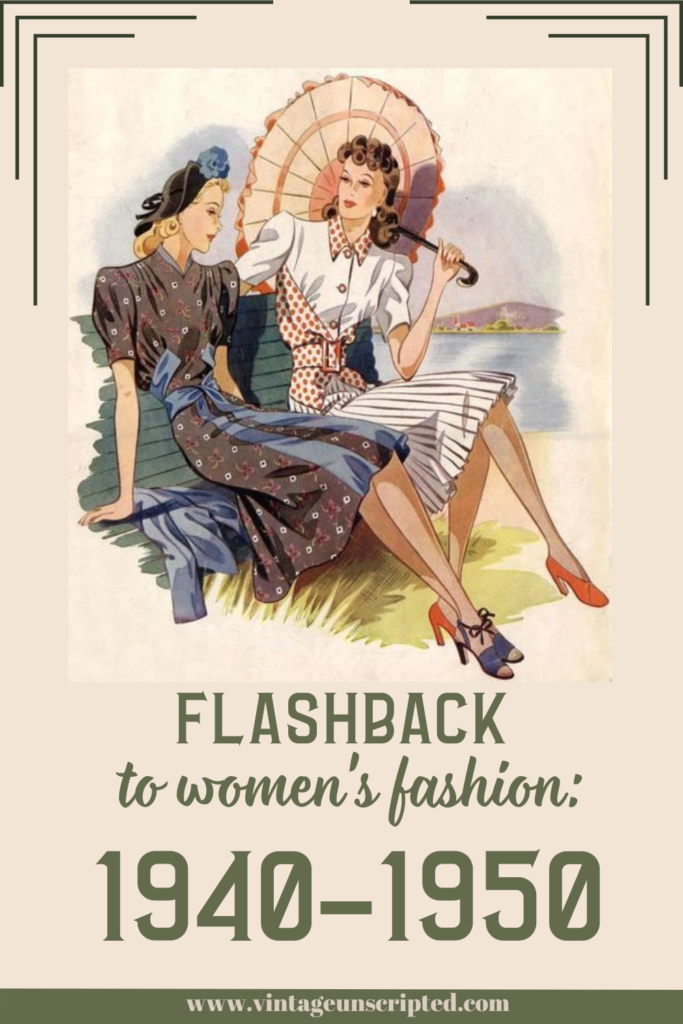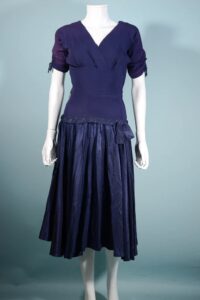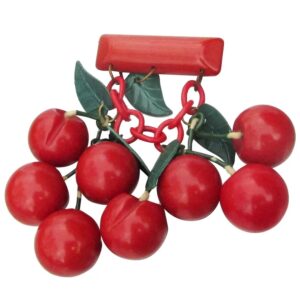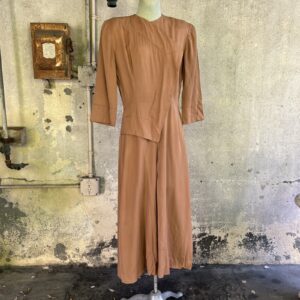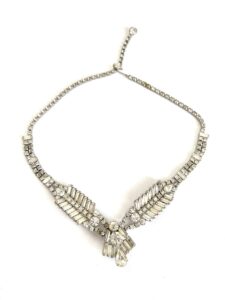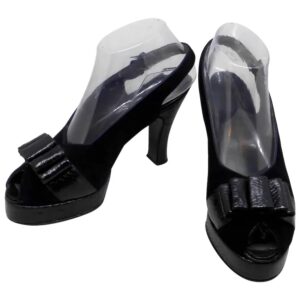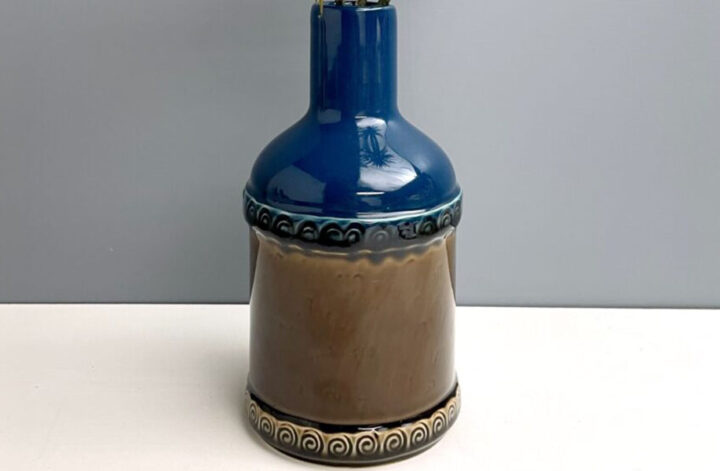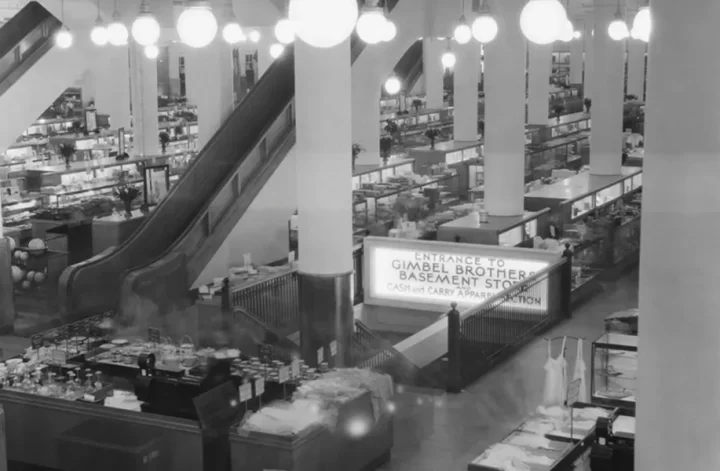A Decade by Decade view of Women’s Fashion in the 20th Century. This 10-part series covers the styles and changes in women’s fashion from 1900 to the year 2000. We discuss everything from designers to fabrics, hem lengths to sleeves. This week we look at vintage fashion from 1940 to 1950. Follow along with us each week as we delve into another decade.
The 1940s, known as “the war years,” brought about change in clothing styles due to a shortage of materials. This meant hemlines were raised to knee length and fashion took on a more tailored look, complete with shoulder pads and nipped in waists. Puff sleeves balanced out the severity of those big shoulder pads.The early 1940s saw the rise of the A-Line dress with a fitted blouse top and wide skirt centered with a narrow waist.
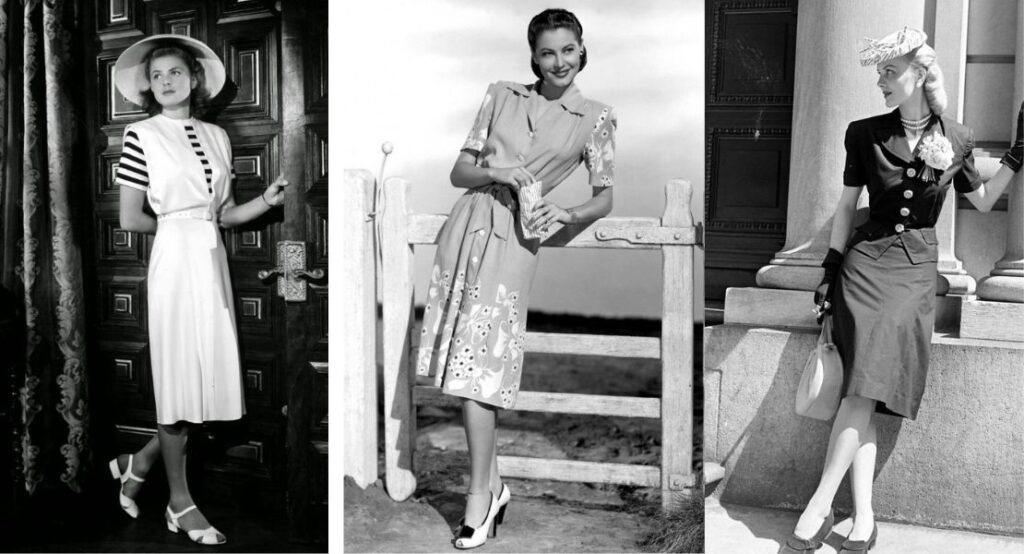
Fabric rationing also brought about women’s two-piece suits that could be mixed and matched to create different looks. Rationing throughout the war years was common practice, but did you know that Britain had a system of ration coupons specific to clothing? The Imperial War Museum has a couple of interesting articles regarding clothing and fabric rationing in Britain during the Second World War. You can read the articles here and here.
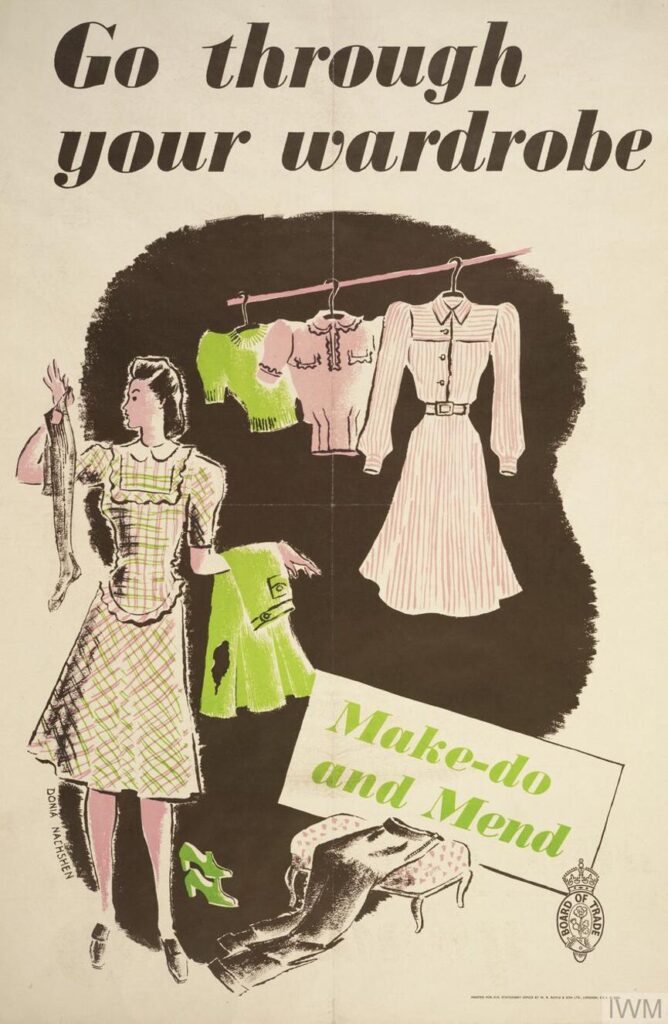
Pants became more popular for women as well, as more women stepped up to work and help the war effort. Waistlines were high and narrow with wide pant legs echoing that of a man’s suit. Since some women were working in factory jobs, coveralls and overalls were worn at work and slowly became fashion staples as well. Shoes reflected the more tailored look too. The heels were low and chunky with wedge heels becoming popular as well as lower-heeled pumps and peep toes.
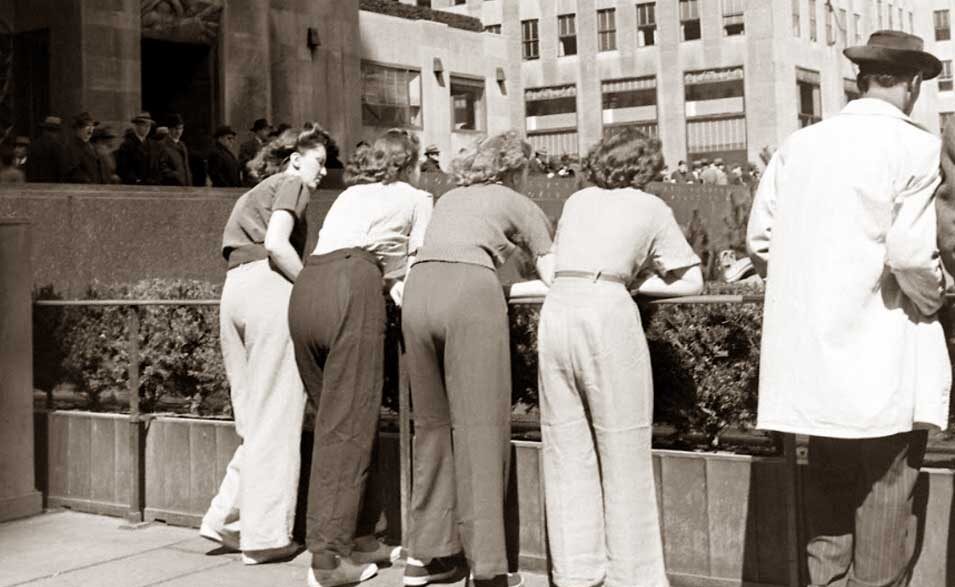
Costume jewelry became popular as a low-cost way to adorn the more severe dress. Cheap pot metal jewelry with sparkling rhinestones and plastic jewelry such as Bakelite were an easy way to dress up a simple outfit because these materials were relatively available at a reasonable cost.
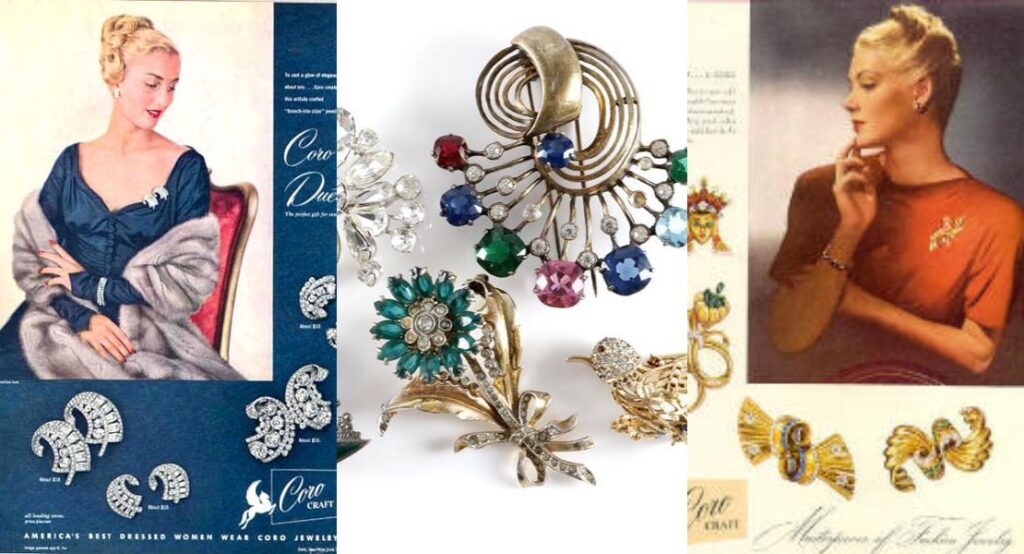
Due to France being cut off from both Britain and the U.S. during the war, French fashion no longer reached across the pond. American and British fashion began to take on a different look. One of the fashion greats who emerged from the severity of the 1940s scene was Claire McCardell. She introduced her Pop-Over wrap dress which remained in her collections for the rest of her career. McCardell produced no-nonsense practical clothing that is still fashionable today. She was one of the first truly American designers to be recognized. Aside from her very practical designs, she incorporated pockets into women’s clothing, one of the first to do so.
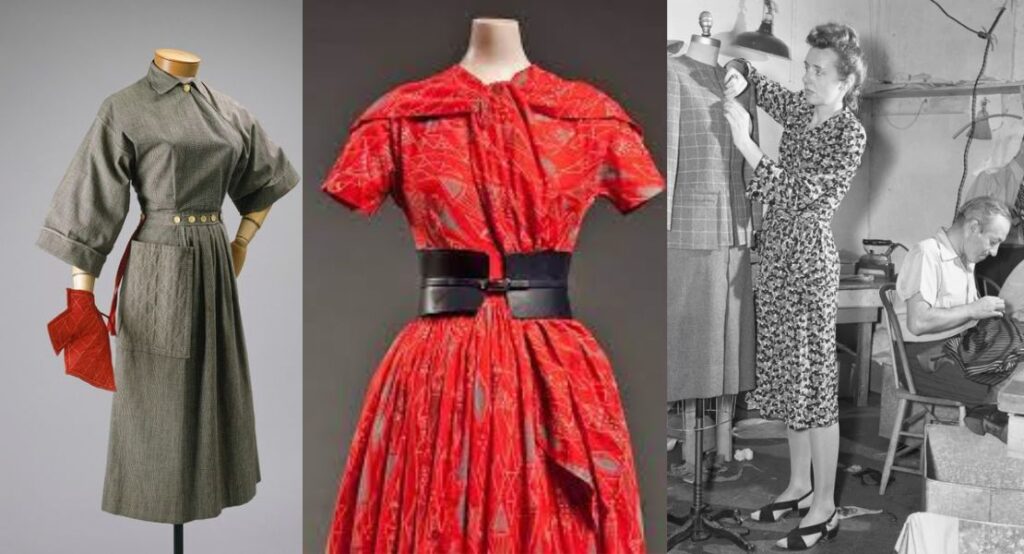
On the flip side of McCardell’s sensible dress was Christian Dior’s stunning look later in the decade. Since the great war had ended women were looking for a softer more feminine silhouette. Dior’s “New Look” fit the bill perfectly when it debuted in 1947. Having worked alongside many well-known fashion designers throughout the 1930s and early 40s, he embarked on his own in 1946 creating The House of Dior.
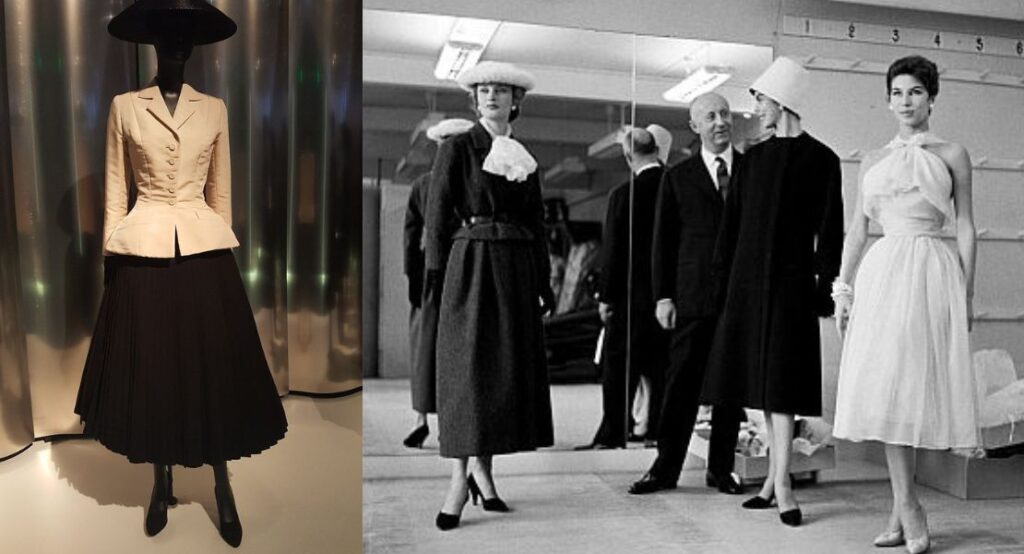 Norman Norell also benefitted from the lack of French fashion during the 1940s. Working for some of the best known designers of the day and creating costumes for film, he eventually went on to partner with Anthony Traina to create Traina-Norell in 1941. Norell, unlike McCardell, designed dresses covered in sequins, and coats trimmed in fur. His clientele was made up of the most glamorous women of the day. Hollywood movie stars and important women wore his designs. Norman Norell was the recipient of the first Coty Award for fashion in 1941, and went on to win many more fashion awards over the years. Come along with us next time as we peek into the 1950s.
Norman Norell also benefitted from the lack of French fashion during the 1940s. Working for some of the best known designers of the day and creating costumes for film, he eventually went on to partner with Anthony Traina to create Traina-Norell in 1941. Norell, unlike McCardell, designed dresses covered in sequins, and coats trimmed in fur. His clientele was made up of the most glamorous women of the day. Hollywood movie stars and important women wore his designs. Norman Norell was the recipient of the first Coty Award for fashion in 1941, and went on to win many more fashion awards over the years. Come along with us next time as we peek into the 1950s.
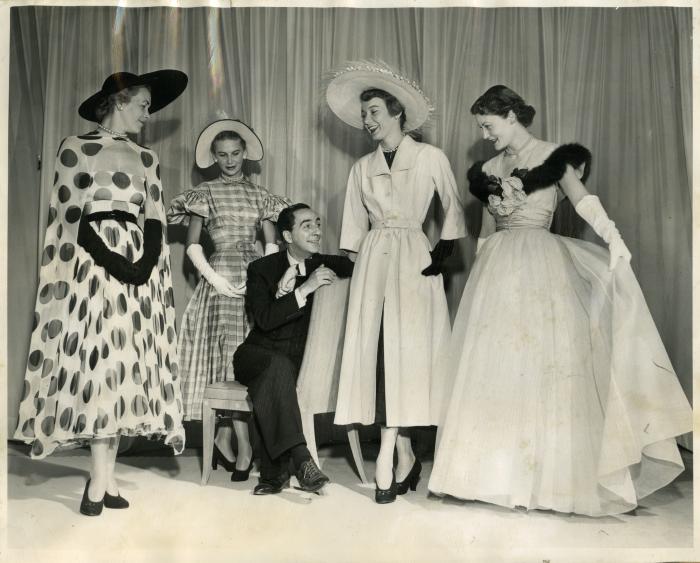
Wear the Look of the 1940s
Explore the other decades by clicking here.
Pin It
